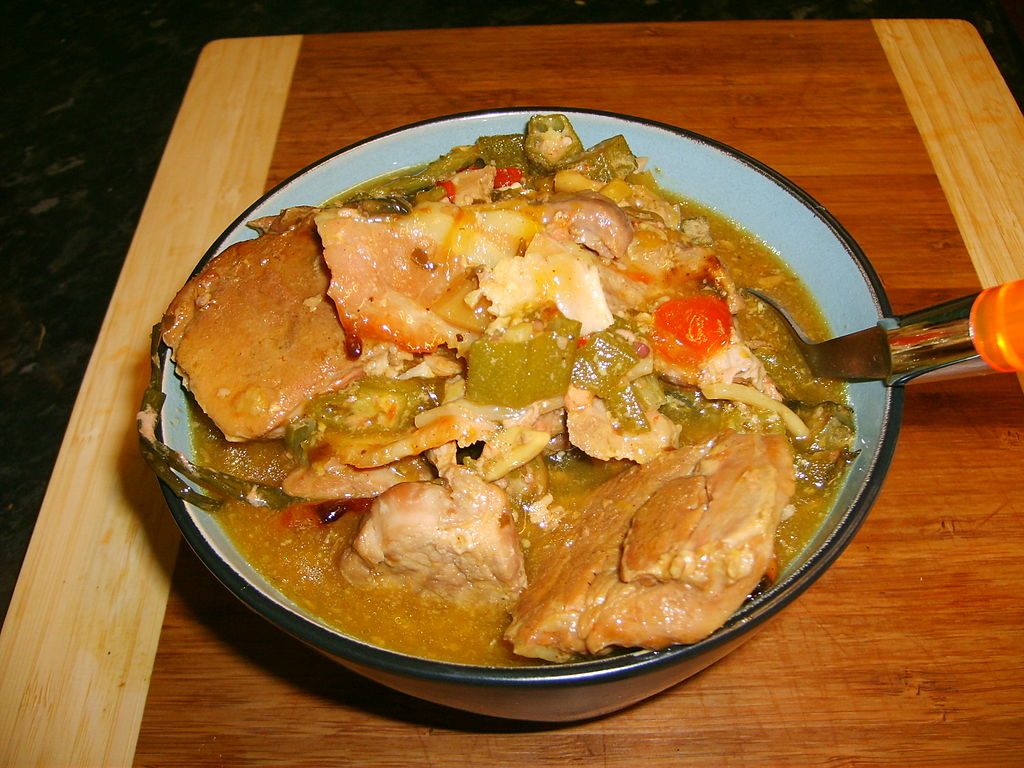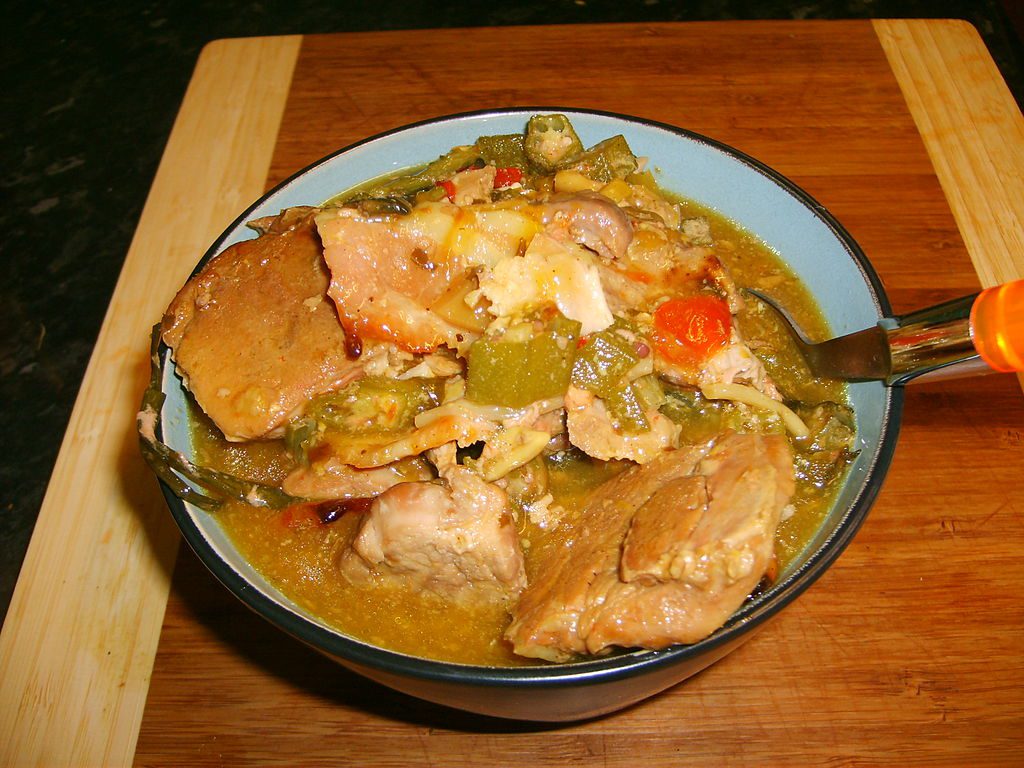Making a hearty pork stew is a great way to combine thick meat and vegetables while going easy on carbs and keeping the cooking process simple.
As a stew, making sure you’ve given enough time for your meat to soften and cook is paramount—so this isn’t going to be a meal you can prepare quickly. Planning ahead and mixing in the ingredients in just the right way is what sets a good stew apart from a great one.
We’ll be looking at a classic pork stew recipe—as well as going over a few ways to add a little more flair to the hearty and flavorful meal.
Ingredients
- Pork Roast
- Corn Oil
- Carrots
- Seasonings
- Onions
- Potatoes
- Garlic Cloves
- Chicken Stock
- Salt and pepper (to taste)
Instructions
Great pork stew starts with great pork, and the adaptive nature of pork stew means that you can select just about any cut of meat you’d like. Of course, using a premium cut will yield different results than a cheaper cut, so make sure you know what you’re dealing with and preferably have cooked with the cut before.
Slice your meat into squares—trying to keep a good balance of lean and fat with each slice. From here you can either move forward with our recipe or try out some seasonings to add that extra dimension of flavor.
We recommend sticking with crushed garlic cloves—but you can mix in toasted seasonings, seeds, basil, and other aromatics. If you’re choosing to go this route, make sure to mix in the extra seasonings with your meat and allow several hours for your meat to marinate and soak up the additional flavors. Allowing to marinate overnight is best.
We’re going to put the meat aside for a second as it marinates to prepare the vegetables and other ingredients that we’ll be mixing into our pork stew.
Traditionally, you’re going to want to dice up onions, carrots, potatoes, and possibly parsnip to mix in with your meal. If you want to get creative with it, tossing in other vegetables here will certainly shake up your meal and create some interesting results.
We’ll be getting into these variations in a moment.
After we’ve prepared the vegetables, we need to go ahead and cook our meat in the pan we’ll be using in our oven.
Normally, convention would state that a lighter oil (like olive oil) would be perfect in this situation. However, the cooking process of a stew normally counteracts any benefits you may expect from olive oil, so we recommend sticking with canola oil or corn oil to cook your meat in.
Toss your marinated pork into the pan and stir to ensure an evenly cooked meal. Don’t worry too much about a fully cooking the meat at this point (since we’ll be baking shortly), but make sure you end up with a nice brown color.
If you’d like to, you add additional seasonings or salt and pepper to taste as you cook.
Once you’ve finished, remove the meat and work your way back to the vegetables. Depending on how much oil you’ve used, it may be helpful to leave the fat and oil residue behind in the pan to sauté our vegetables. If you’ve got too much, be sure to remove some of it here.
You can pour the chicken stock in here, but if you’ve got any extra garlic cloves, make sure to mix them into the stock to double down on the flavor. Either way—now may be a good time to make sure your pan is big enough for everything we’re about to place in it.
Stir and cook the vegetables for about ten minutes or so to get the mixture to reduce and to make sure that meaty flavor bakes in. Lower your heat as well to make sure you’re not scorching your meal prematurely.
This is where it all comes together. Grab your browned meat and place it on top of the vegetables and mix well. Any extra seasonings or leaves need to be added now and are usually best served by soaking at the edges of the pan for easy removal later on.
Once you’ve finished adding ingredients, cover with plastic, aluminum foil, or any lid that can withstand the heat.
We’re going to finish off our stew by baking at a low temperature for several hours. We recommend baking at 325, but not all ovens are created equal—so don’t be scared to adjust. Aim for at least three hours in the oven.
Once we’ve finished softening our pork and cooking the vegetables, all that’s left to do is get it out on a plate and enjoy! If you’re focused on specific seasonings, consider adding more salt and pepper before serving and topping with oregano or a similar green.
Review
- Cut pork into sizable squares and leave an equal amount of lean and fat on each cut
- Marinate and prepare vegetables by dicing and sautéing with chicken stock
- Add in meat and cover with plastic or aluminum
- Bake at 325 and for at least three hours until meat is tender
Variations and Meal Ideas
Our pork stew recipe will give you a classic, Irish-style stew that will serve you well on cold winter days—but you don’t have to limit yourself to these ingredients, or even this method of cooking!
If you’re interested in faster cooking time or bringing out different flavors in your strew, try out some of our variations and ideas for keeping pork stew interesting and new.
Crock Pot & Faster Cook Time
We’ve cooked our pork stew the traditional way with the pan and oven method—but you could alternatively try out a crock pot to shorten your cook time or save room for other items you may be cooking.
To do this, keep following our instructions up until covering the pan. Instead of stopping here, simply load up your strew into the crock pot and keep enough heat going to give you a little bit of a simmer. Lots of crock pots have glass coverings, so cooking your stew this way will give you a little more of an ability to add more vegetables, meat, or stock if necessary.
Alternatively, you could use your pan for browning your meat and cook your vegetables in the crock pot—provided it gets warm enough.
Unfortunately, there aren’t a lot of ways of making beef stew on the fly without seriously impacting flavor. If you need to make your meal and can’t wait all afternoon for the cooking process to soften the meat, brown your meat and make sure it’s cooked all the way through in the pan before adding in all the extra ingredients.
Simmer for as long as possible, but using this method in theory get you a finished meal in an hour or less.
It may not be as flavorful, but it’s certainly less involved.
Vinegar & Beer
Many of the most popular ways of changing up a beef stew include trying out variations on the chicken stock.
Adding in vinegar during that initial vegetable cooking process to bring out a sharper flavor—but do be careful not to overdo it.
Cooking with beer is also a favorite for parties and events. Try pouring in a dark stout to darken the flavors as you cook and serve over mashed potatoes with a full pint. We probably shouldn’t mention the best brand of stout to cook with, but if you’re preparing an Irish stew, you probably already know which beer you’re going to need.
Apples & Alternatives
Finally, build upon cooking with vinegar by trying out apple cider and apple wedges. This is a great variation for those who don’t like the bitter taste of a stout or aren’t afraid to spend a little more time giving everything correct.Add in apple cider (or apple cider vinegar) when cooking the vegetables much like many of our other vacations here. Cook the rest of the stew as normal but pull the pan out of the oven prematurely to add in your chunks of apple. Adding apple in too early will cause them to fall apart into the broth, so we want to be careful not to add them in too soon. Cook for another hour and serve.
Cooking in fall? Try serving an apple and pork stew with a glass of cider on a cold autumn day.
Wrapping Things Up
Patience is a virtue, and that adage couldn’t be truer when trying to master a pork stew. Try out different chunks of meat (or even switching to beef) to see which provides the best tenderness and taste—and don’t be afraid to mess with your vegetables to provide a different base for your meal.
Plan ahead, marinate and cook as long as possible, and enjoy the taste of a meal that’s days in the making.




